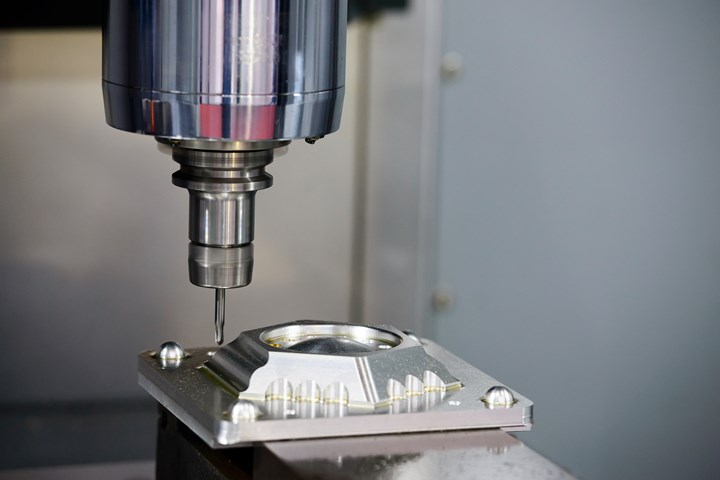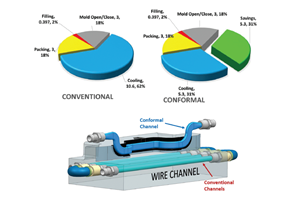7 Ways to Simplify Mold Modifications
Creating new molds for every new iteration can be a resource-intensive exercise. Modifying existing molds can save time and money.

Here are seven factors to consider to simplify your mold modification process:
1. Cutting depth
It is easy to mill out the larger parts of a mold, but there are limitations on the minimum depth you can cut. Plan your milling and ensure that you have enough space to accommodate the minimum cutting depth, which varies based on the milling equipment you use. Milling machines have different minimum cutting depths, so you'll have to cut in increments of the minimum milling depth.
2. Parting lines
Most operations that need the expansion of a part at the parting line will require you to build a whole new mold. Modifying this could have implications for the other mold features. Gates are built into the mold's parting line to allow the plastic to enter a cavity during the injection, while vents allow air to escape the mold. These features usually cannot be changed without affecting the structural integrity of the mold.
3. Micro milling
Micro milling is a technology that could help you produce more accurate molds while also reducing build times. Micro-milling can hold A36/4140 steel plates three times more flat than rotary surface grinding. A micro-milled plate is also 10 times as resistant to tolerances when holding large plates flat and parallel.
4. Undercuts
Undercuts are a great way to be as economical as possible when modifying existing molds. Modifications that include extensive additions are often a waste, but it's possible to use undercuts to replace side-actions without changing the parting line. Planning your mold design to allow undercuts is one of the best ways to save on mold modifications.
5. Material selection
There is a range of materials you can work with while building a mold. However, keep in mind that each has its pros and cons, and one material might fit your requirements better than another. Ensure that you do your research and choose the right material for your mold.
6. Resin choice
A major factor when choosing a resin for your mold is the amount by which it will shrink when it cools. Molds are oversized to account for the shrink rate. A great way to test different kinds of resins in a single mold is to make the mold for the type of resin that has the highest shrink rate and then machine the parts of resin with lesser shrink rates. This makes it possible to create a mold that's perfect for the kind of resin you've chosen.
7. Planning
By planning, you'll design a mold in a way that would make modifications easy and achievable, thereby saving you a lot of money and time. Some changes may require you to build an entirely new mold, but planning for changes ahead will allow you a degree of flexibility. This means you only have to remake specific parts of the mold instead of the whole mold itself.
There's a lot that goes into modifying molds, and keeping some of these things in mind can help you simplify that process.
For More Information
CNC Masters
626-962-9300
Related Content
How to Use Thermal Management to Improve Mold Cooling
A review of common mold cooling issues and possible solutions, including 3D printing applications.
Read MoreLaser Welding Versus Micro Welding
The latest battle in finely detailed restoration/repair of mold materials.
Read MoreQuestions and Considerations Before Sending Your Mold Out for Service
Communication is essential for proper polishing, hot runner manifold cleaning, mold repair, laser engraving and laser welding services.
Read MoreHow to Use Scientific Maintenance for More Accurate Mold and Part Troubleshooting
Discover how adopting scientific maintenance approaches helps improve mold lifespan, minimize failures, and optimize production outcomes.
Read MoreRead Next
Are You a Moldmaker Considering 3D Printing? Consider the 3D Printing Workshop at NPE2024
Presentations will cover 3D printing for mold tooling, material innovation, product development, bridge production and full-scale, high-volume additive manufacturing.
Read MoreReasons to Use Fiber Lasers for Mold Cleaning
Fiber lasers offer a simplicity, speed, control and portability, minimizing mold cleaning risks.
Read MoreHow to Use Strategic Planning Tools, Data to Manage the Human Side of Business
Q&A with Marion Wells, MMT EAB member and founder of Human Asset Management.
Read More


















